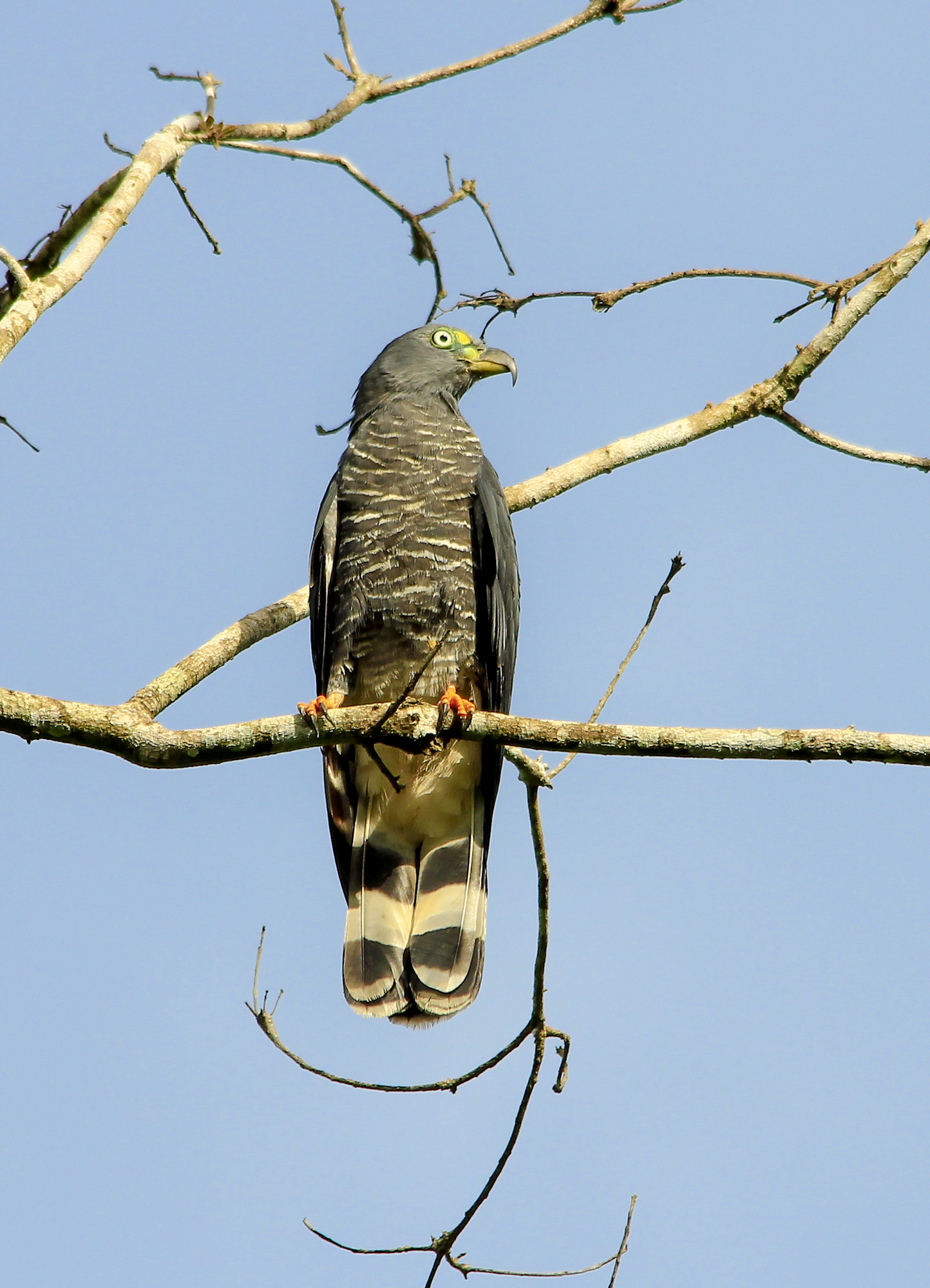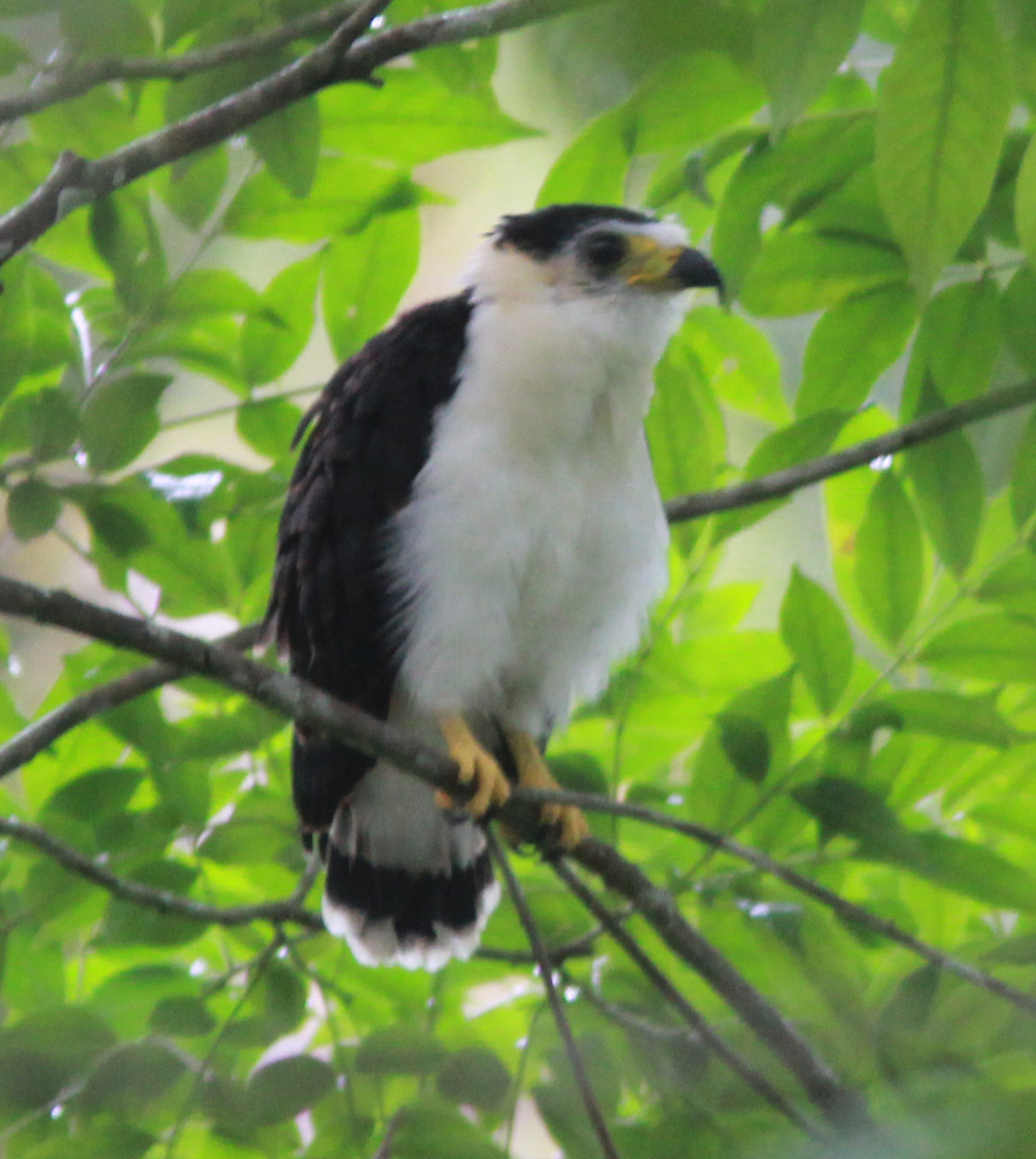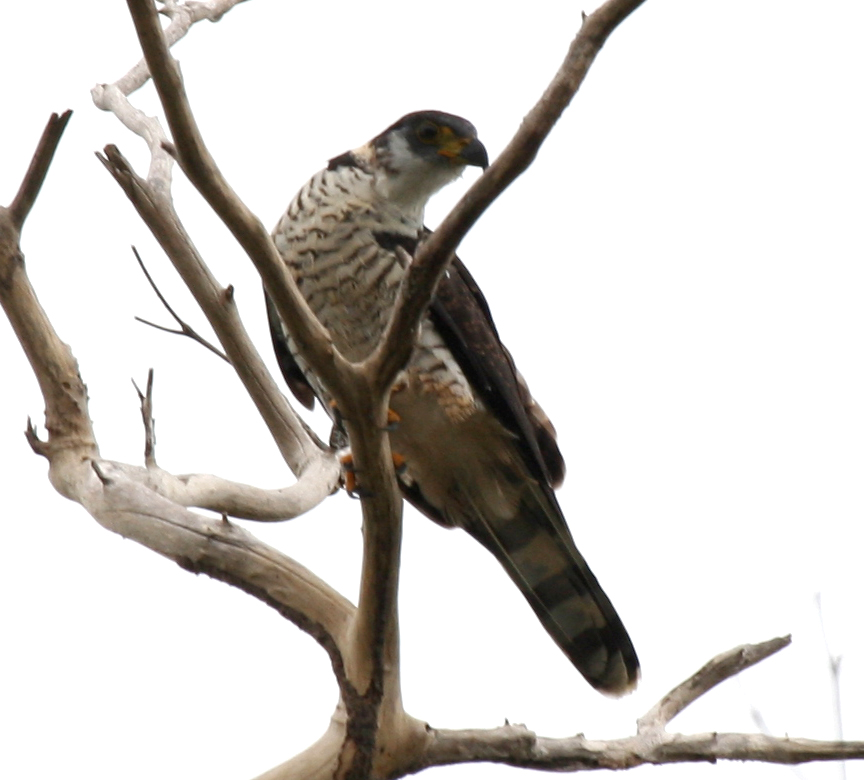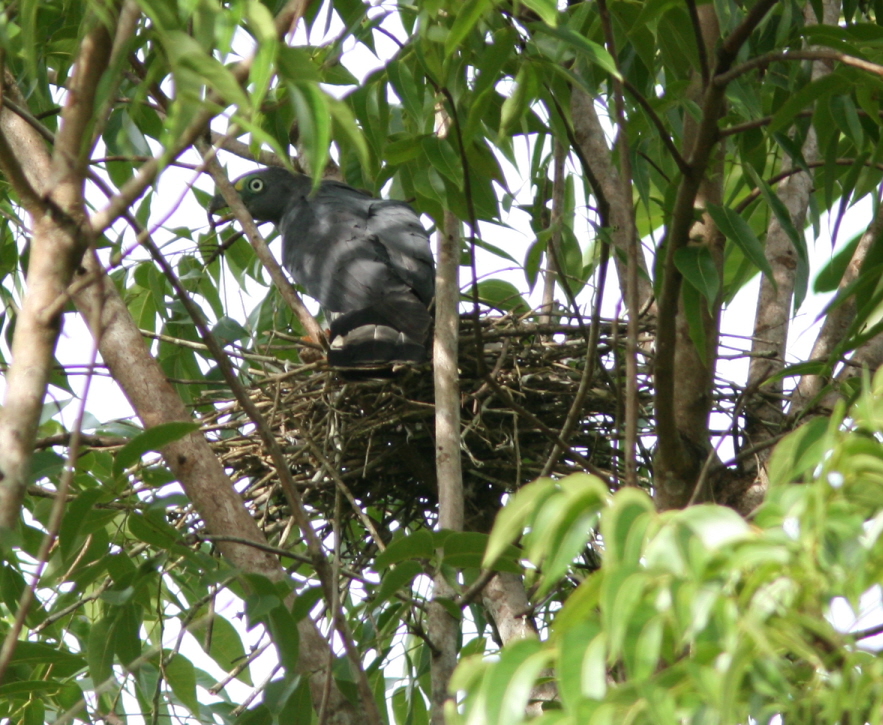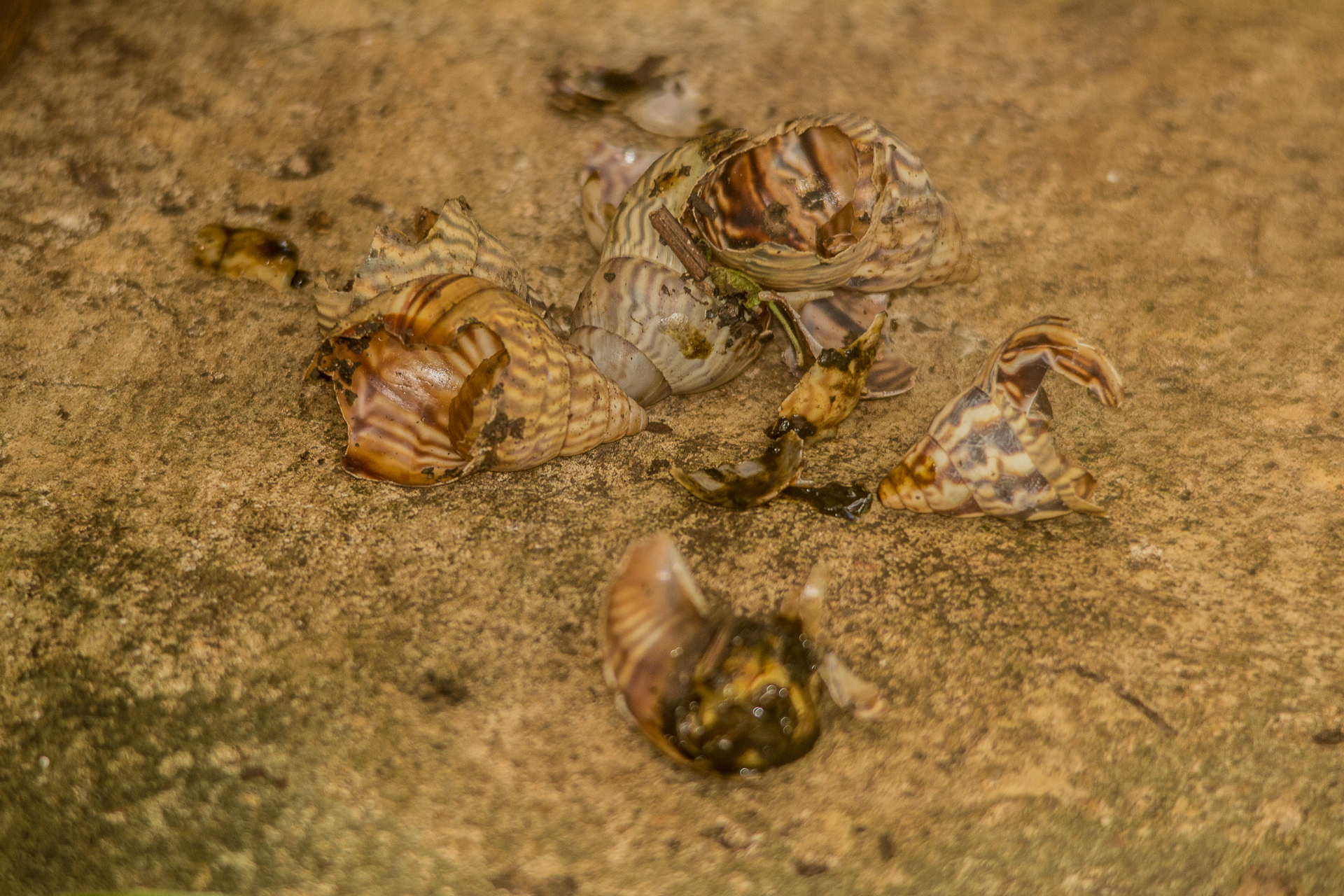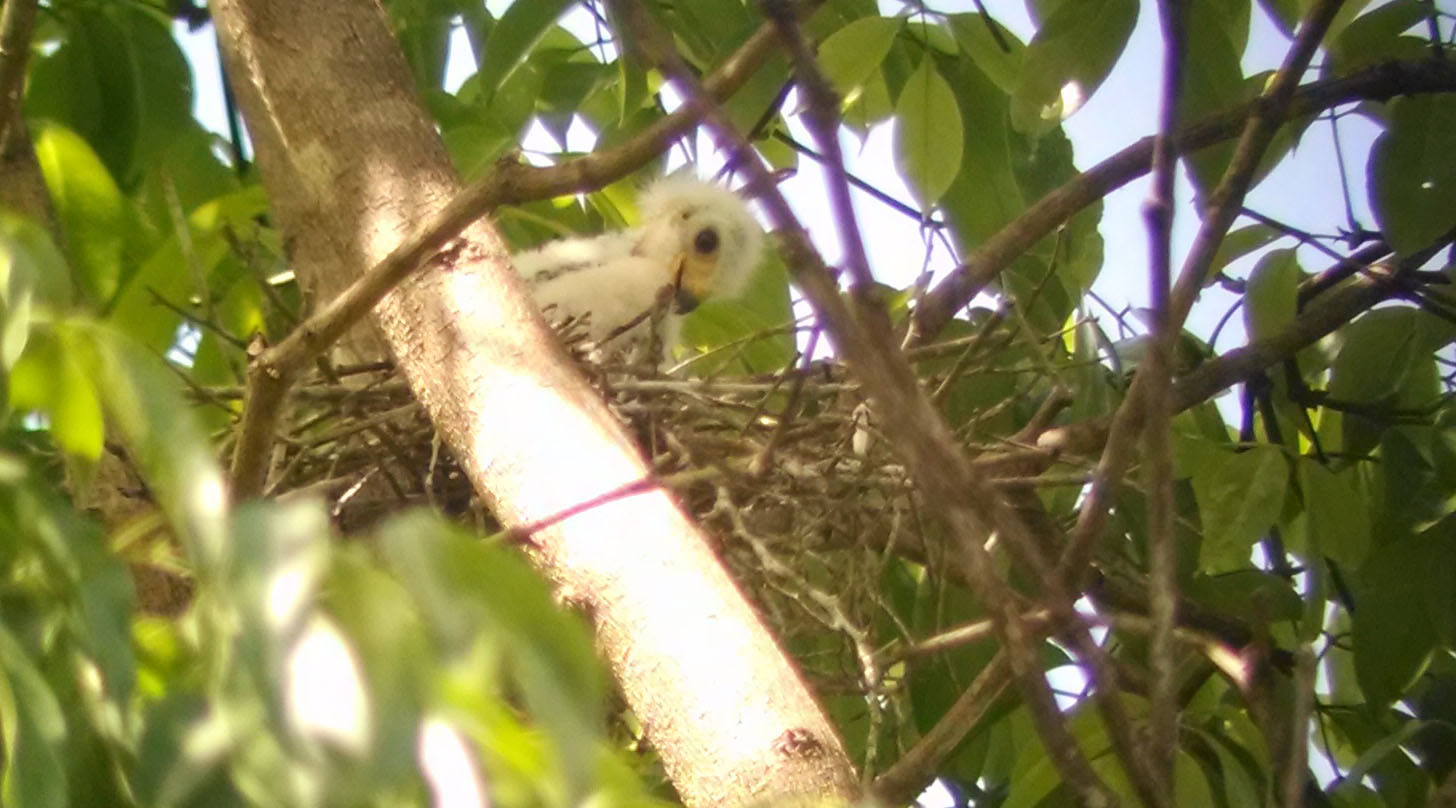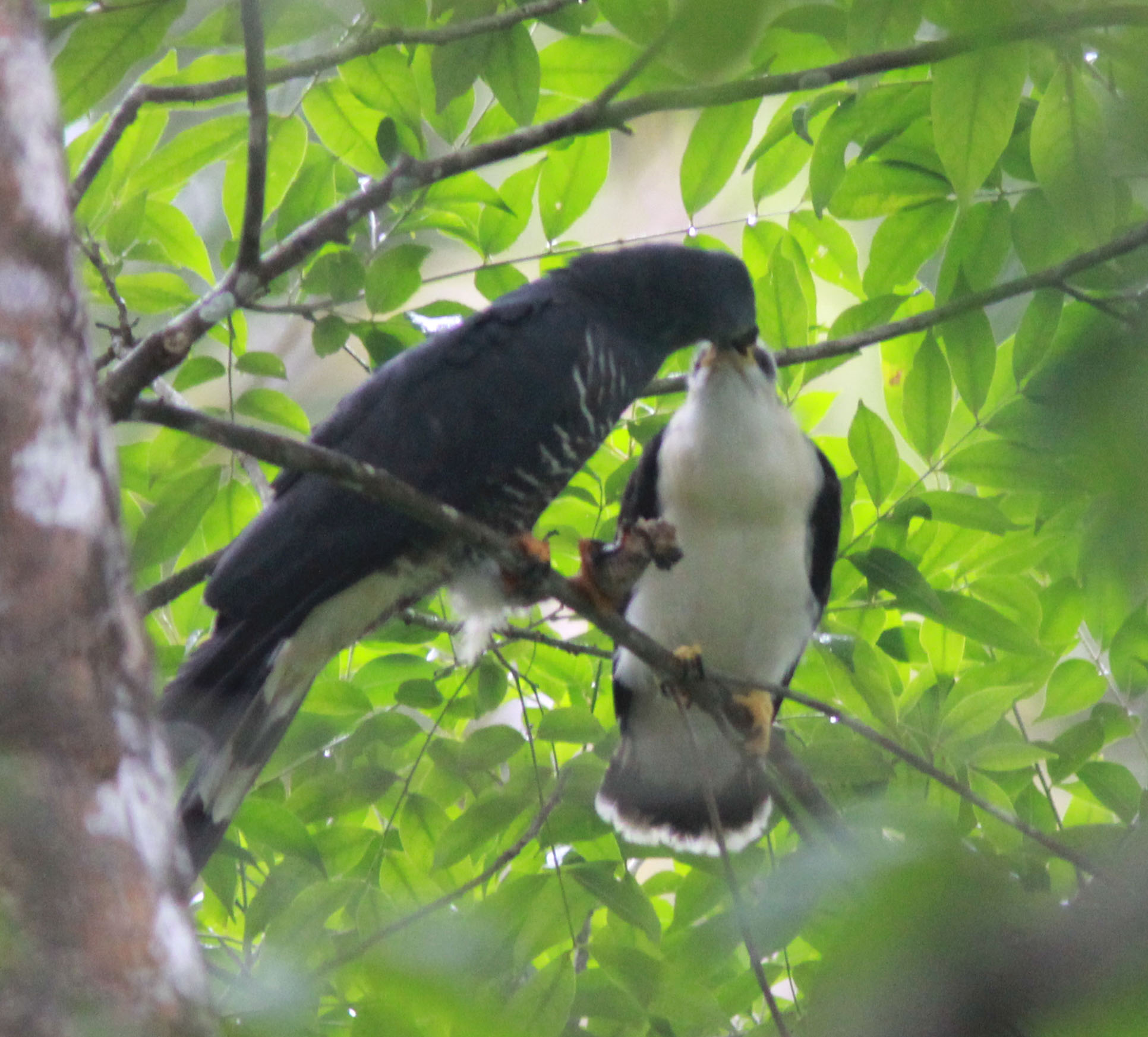Hook-billed kite project
Hook-billed Kites (Chondrohierax uncinatus) occur in a variety of tropical forest habitats, with a patchy distribution ranging from southern Texas to northern Argentina (Bierregaard et al. 2020). Hook-billed Kites are in the category of least concern with a decreasing population trend (BirdLife International 2020), though minimal information exists for this species regarding its breeding ecology across most of its range, particularly Central America. Previous nests have been reported in Texas with the most comprehensive information from Guatemala and Grenada. Given this Neotropical kite’s highly specialized diet of arboreal land snails, and the dearth of basic life history information across much of its range, research attention is warranted to help inform conservation policies and initiatives for tropical raptor communities. In Belize, Central America, Hook-billed Kites are one of the most abundant migratory raptor species (Phillips et al. 2015), but they are considered rare and uncommon during the breeding season. Prior to this study, no information had been recorded in the literature about the nest sites and breeding ecology of this species in Belize. To increase understanding of Hook-billed Kite ecology in the region, our objectives are to collect detailed observational data on this enigmatic species.
Little is known and unclear about Hook-billed Kites including: habitats usage, migration and movements, prey ecology and breeding biology. These kites have a very specialized diet leading to high vulnerability of being impacted by human activities, such as climate change. This species warrants high study priority to assess its movements, breeding biology, ecology of prey, population status and threats.
Documenting baseline information of Neotropical raptors is especially important because, as top predators, they have a significant role in maintaining biodiversity throughout tropical ecosystems. In 2013, we launched the Hook-billed Kite Project. This project aims to unravel the mysteries of the enigmatic Hook-billed Kite (Chondrohierax uncinatus), a highly specialized Neotropical raptor species.
This is the first full-scale study conducted on the Hook-billed Kite and will provide valuable information, such as habitat utilization, breeding biology, foraging ecology, and migratory movements in order to assess the effects of environmental fluctuations over time.
TRACKING STUDY
The most diverse raptor community in the world is found in the Neotropical region (Mexico through South America) (Bildstein 2004, Phillips et al. 2023). However, despite the high species richness in this region raptors have received very little research and conservation attention (Beuchley et al. 2019). Tropical raptors are critical components for maintaining the function of ecosystems (Estes et al. 2011), but they are facing rapid declines due to anthropogenic factors (McClure et al. 2018, Phillips et al. 2023). This research provides an opportunity to understand the important ecological needs of a Neotropical species and to provide insight for potential conservation efforts.
The Hook-billed Kite, Chondrohierax uncinatus, is an example of a Neotropical raptors with many unknown aspects of its ecology (Phillips et al. 2023). It is a highly specialized and widespread species feeding only on terrestrial snails. The Hook-billed Kite is generally considered an uncommon Neotropical species with local declines noted (Colorado et al. 2006, Johnson et al. 2007). It is found in various forest types from extreme southern Texas to northern Argentina (Phillips et al. 2023).
Starting in 2013, we have been monitoring a large southbound migration during autumn of Hook-billed Kites at the Belize Hawk Watch in southern Belize, Toledo District, with an average of 4,961 kites counted per season (12 years), but with a high annual variation of 750 to 9,800 kites (Phillips et al. 2023). This is the largest migration of this species anywhere in the world and was only recently discovered (Jones 2002, Phillips et al. 2023). Despite this relatively large migration it remains a mystery as to where these migratory Hook-billed Kites are migrating to and where they are spending both the non-breeding season and breeding season as this magnitude of a Hook-billed Kite migration has not been observed outside of Belize. This abundance in Belize during migration affords a rare opportunity to track the movements of this little known and elusive species to better understand its migratory patterns, identify critical non-breeding and breeding areas, and provide insight for conservation and habitat protection. In the Yucatán Peninsula in Mexico, the Hook-billed Kite’s largest suitable breeding area in the northern extent of their range, deforestation and habitat loss is a major concern that is currently or could become a major threat to Hook-billed Kite populations and their movement ecology. To understand this enigmatic migration, we are excited to propose a tracking study using novel cellular GPS tracking technology. With this project, we will begin to unravel this mysterious movement of Hook-billed Kites and better understand the potential threats and key areas for this species that will benefit other Neotropical species.
Objectives:
1) To determine the migration routes and non-breeding areas
2) To determine the migration distance and route differences
3) To determine timing of migration
4) To determine non-breeding and breeding site fidelity
5) To determine breeding areas
6) To determine home-ranges both on the breeding and non-breeding grounds
Publications


